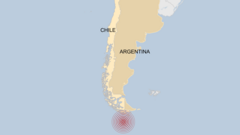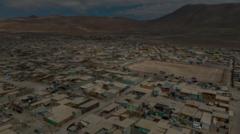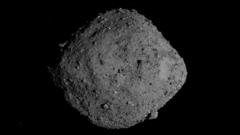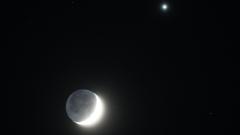The interstellar object 3I/Atlas, detected recently, might be over seven billion years old, offering new insights into ancient cosmic formations. Its approach to the Sun could reveal a spectacular tail of vapor and dust.
Ancient Interstellar Visitor: The Possible Oldest Comet 3I/Atlas
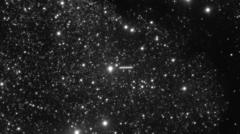
Ancient Interstellar Visitor: The Possible Oldest Comet 3I/Atlas
Astronomers reveal groundbreaking findings about 3I/Atlas, potentially the oldest known comet, billions of years older than the solar system.
A recently identified interstellar object, named 3I/Atlas, could represent the oldest comet ever discovered, according to new research by astronomers from Oxford University. Initial analyses suggest it may be three billion years older than our solar system, marking it as a rare find among cosmic wanderers. This object, only the third of its kind observed entering from outside our solar system, was first detected on July 1, 2025, by the ATLAS survey telescope located in Chile when it was approximately 670 million kilometers from the Sun.
Matthew Hopkins, an astronomer with the University of Oxford who was pivotal in this discovery, expressed his excitement over 3I/Atlas during his presentation at a recent Royal Astronomical Society meeting in Durham, UK. With estimates suggesting it could be more than seven billion years old, Hopkins states, "We are on the brink of understanding one of the most extraordinary interstellar visitors."
The research team proposes that 3I/Atlas originated from the Milky Way's 'thick disk,' an ancient formation of stars located above and below the plane of the galaxy. They believe the object likely contains substantial water ice due to its formation near older stars. As it approaches the Sun in the coming months, the object's surface is expected to heat up, creating jets of vapor and dust, perhaps culminating in a shimmering tail.
Commenting on the significance of this discovery, Chris Lintott, a co-author of the study, noted, "This object hails from an uncharted region of our galaxy, which we have yet to explore closely." With a two-thirds probability that 3I/Atlas predates our solar system, it’s been on a long journey through the cosmos.
Astronomers are eagerly awaiting the opportunity to observe 3I/Atlas with amateur telescopes as it becomes more prominent later this year. Prior to this discovery, only two known interstellar objects had been documented: 1I/'Oumuamua in 2017 and 2I/Borisov in 2019.
As scientists prepare to utilize the new Vera C Rubin Observatory set to commence its southern sky survey later this year, the potential for discovering even more interstellar objects is high, possibly revealing between 5 to 50 new celestial visitors.





